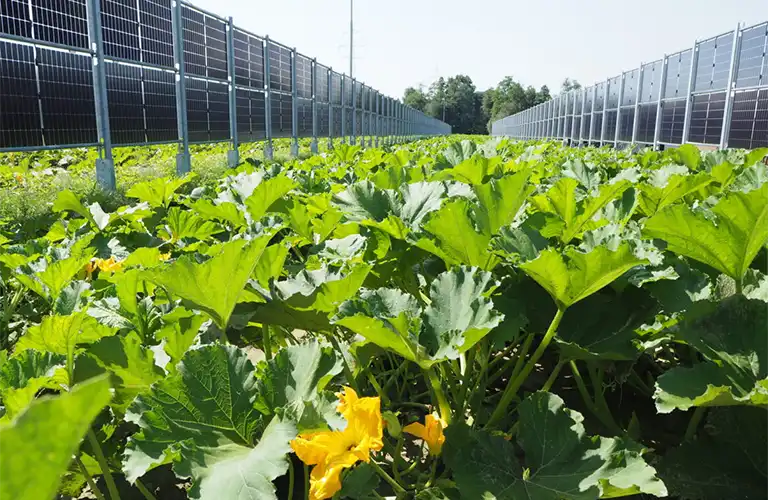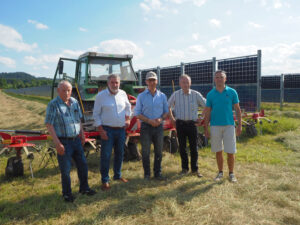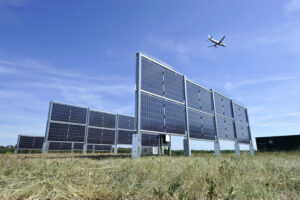PRESS RELEASE
(Gabersdorf (Styria), 30.06.2023)
Austria’s first large-scale vertical bifacial agrivoltaic plant with a nominal output of almost 2 megawatts of module power was inaugurated in Gabersdorf, Styria, by Vice-Chancellor Werner Kogler: “We must not let the current crises scare us. On the contrary, they show us how important it is to make rapid progress with the energy transition – this Agri-PV project is a great example of how it can be done.” The project has a model character in several respects, first and foremost, of course, through its dual use with agriculture and photovoltaics: while the rows of modules produce a maximum electricity yield in glorious sunny weather, pumpkins ripen on more than 90% of the area between the rows of modules. “This is my best field, I can’t just build on it,” says Josef Gründl, owner and farmer of the land. The vertical technology of the Next2Sun only covers approx. 1% of the area, so that a good 90% can still be effectively cultivated with conventional agricultural machinery – approx. 10% around the module rows can also be used for ecological enhancement measures. “Styria is taking on a pioneering role here,” says Hubert Lang, spokesperson for agriculture, environmental protection and nature conservation for the Styrian People’s Party: “Our early legal regulation for agrivoltaics has made this flagship project possible and is sure to make many follow-up projects possible. With funding from the Styrian Eco Fund, the project will be scientifically supported for three years in order to research and document the synergies between vertical photovoltaics and primary agricultural production more comprehensively.
Heiko Hildebrandt, CEO of Next2Sun AG, the pioneering German-Austrian agri-photovoltaic company and inventor of the system, explains its particular relevance for the energy transition: “In Austria, as in Germany, we are slowly reaching the point where we are at times fully supplied with renewable energy. Further expansion with conventional photovoltaics increases the temporary oversupply and puts a strain on scarce grid capacities. With the Next2Sun systems, we can also generate electricity in the morning and evening hours and thus put the energy transition on a broader footing, so to speak – we are stabilizing PV electricity production and thus utilizing the electricity grids more evenly.”
The local roots of the project are also particularly noteworthy: the project developers, builders and operators are not large national companies, but two local players, Gabersdorf farmer Josef Gründl and master electrician Peter Gsell. Wolfgang Kubassa, model region manager of the Gabersdorf-Schwarzautal climate and energy region, is delighted that his region is providing impetus for the energy transition throughout Austria: “We are convinced that this project will set a precedent.”





